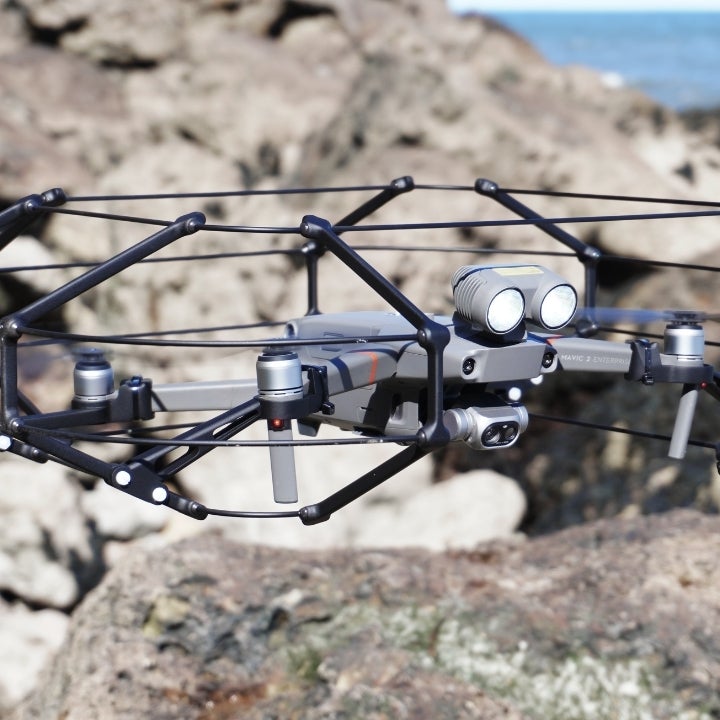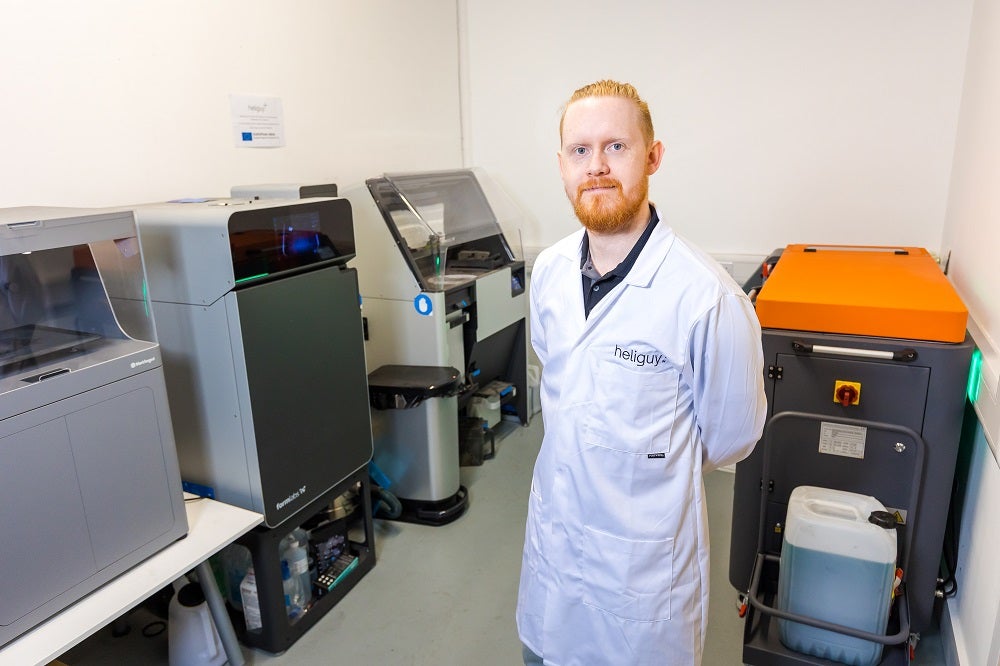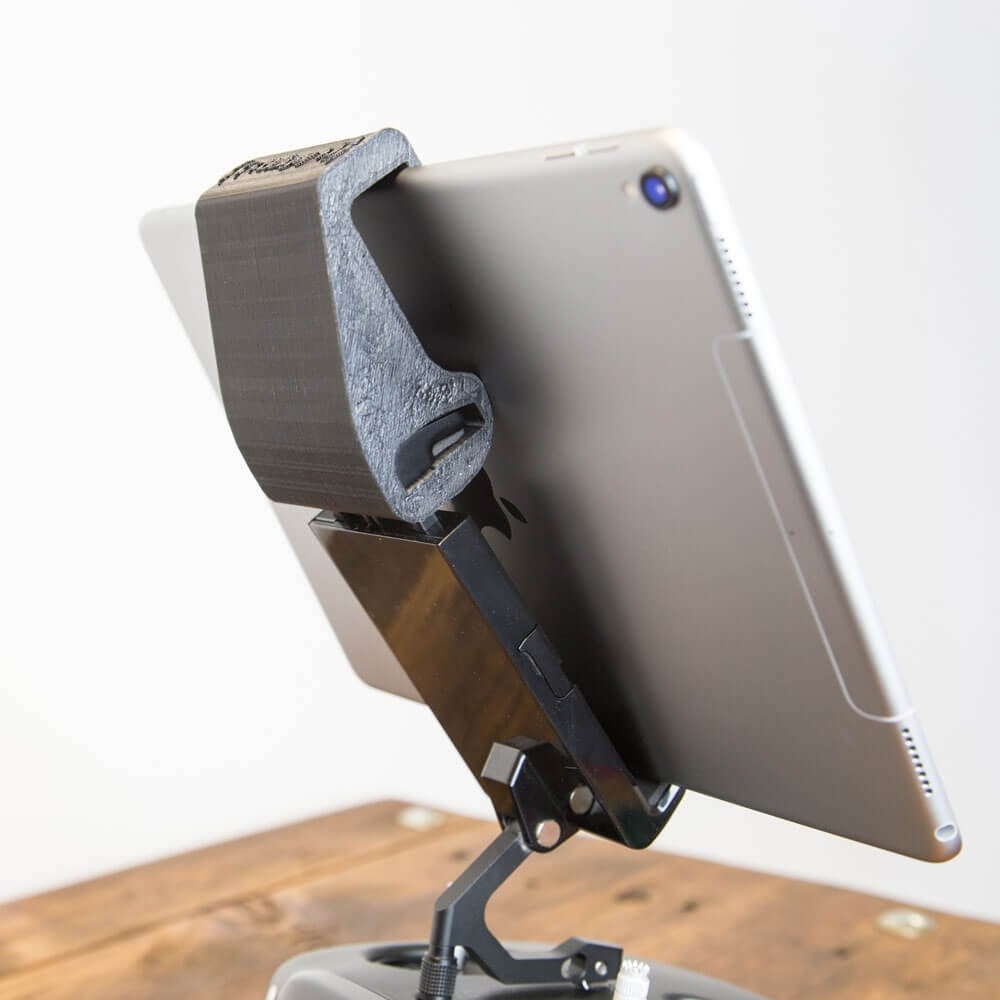As we cover unmanned aerial vehicles and other autonomous craft in my series on 3D printing drone swarms, we regularly come across businesses that are relying on additive manufacturing (AM) for low-volume production of unique drone-related items. For instance, British drone company heliguy is increasingly turning to 3D printing to make parts. The company started in 2006 and now supplies 38 U.K. police forces, Manchester United, commercial firms, and government clients. The company employs 28 people and has a host of drone related products and services.
Ross Embleton, Head of Research and Development at heliguy, explained how the company was able to establish itself in its national market, saying, “We identified a gap in the market – quite early on – when the drone market was just maturing and swiftly established ourselves as one of the UK’s leading independent providers of drones and accessories. Since then, we’ve continued to invest in the business year-on-year. Bringing the production of our components in-house was key to us broadening our horizons and expanding into new markets. It has massively reduced design times too. Now, if the managing director or a client has an idea, we can create a physical, working prototype within a week as there’s no waiting around for third party suppliers. ”
heliguy is a DJI reseller, but it also makes items that add value to DJI’s products. The company’s goods are also innovative. Below you can see the Drone Cage. Some 3D printed parts hold tablets, so drones can be better steered, as well. Through these kinds of parts its not only adding value to itself but also to DJI and its customers.

Now, they’re 3D printing in composite materials, thanks to a new U.K. government grant from the Sustainable Advanced Manufacturing project. The company bought a Markforged X7 system with the money and is investing in post-processing equipment, as well. Additionally, heliguy has a Formlabs Fuse 3D printer and an AM Solutions M1 finishing machine.

I love this as an excellent business case for 3D printing. Here we have a firm that is adding on services and parts to its existing product lines through the use of AM. In response to customer feedback and needs, the company is designing and 3D printing parts that can deliver value to customers. The company’s heli guy lab offering was set up specifically to quickly develop working parts in house. And, especially since were dealing with lightweight parts, AM will complement their offers here very well. We excel at duck tape-type parts where we quickly improvise a new technological solution to a problem. Iteratively improving things and fast prototypes is our forte.
I also love this as a way to implement 3D printing. Rather than having to implement it in production outright or making end use parts in series immediately, the company is designing one-off items together with customers. This allows them to design quickly and correct errors. In effect, they’re learning on the fly by gradually turning prototypes into end-use parts.
To me, this is one of the optimal methods to implement 3D printing in a company. Rather than go for a highly risky, long-term project, heliguy is using the improvisational, quick-nature of 3D printing to implement its first parts quickly. This gives the company a cordoned-off, project-based way to explore the technology, getting its feet wet by gradually delivering on value, part after part.

Take the Drone Cage, for example. heliguy has since improved the design and is making it in-house using its existing 3D printers. This is a super practical product that could save a firm a lot of money. The drone cage sells for £500, which is steep but the drones cost thousands. In the commercial world, lost time on site or the failure to complete a single inspection may be much more expensive still. This is an excellent example of a practical product that DJI wouldn’t take up but that delivers value to all.
At the same time, heliguy also has provided over 3,000 drone training sessions. The company also offers drone protection solutions for combat drones. It has performed over 7,000 repair sessions at client sites, as well. The company has a consultancy, but also advises people for free. It can ship repairs next day and lease drones. In total, this is an all-encompassing service, which I really appreciate.
In 3D printing, too many value-added resellers don’t actually add any value. They just move boxes. We need more firms like heliguy in our market that innovate and extend the functionality of 3D printers by truly adding value in a holistic way.
Subscribe to Our Email Newsletter
Stay up-to-date on all the latest news from the 3D printing industry and receive information and offers from third party vendors.
Print Services
Upload your 3D Models and get them printed quickly and efficiently.
You May Also Like
Metal Powder Supplier Elementum 3D Added to $46B Air Force Contract
Elementum 3D, a Colorado-based developer and supplier of metal powders used in additive manufacturing (AM), announced that the company has been added to the vendors list in the fourth on-ramp...
Ursa Major Lands $28.6M AFRL Deal for 3D Printed Draper Engine Flight Demo
The US Air Force Research Laboratory’s (AFRL’s) Rocket Propulsion Division at Edwards Air Force Base has awarded a $28.6 million contract to Ursa Major for follow-on work related to the...
3D Printing Financials: Rocket Lab’s Record-Breaking Year and Over 20 Launches Coming in 2025
Rocket Lab (Nasdaq: RKLB) closed 2024 with its best year yet. The company launched more rockets, signed more contracts, and expanded deeper into spacecraft and satellite production than ever before....
US Air Force Taps Beehive to Study 3D Printed Jet Engines
Propulsion 3D printing firm Beehive Industries secured a contract from the U.S. Air Force Life Cycle Management Center through SOSSEC. SOSSEC is a company that manages Other Transactions Authority (OTA)...

































